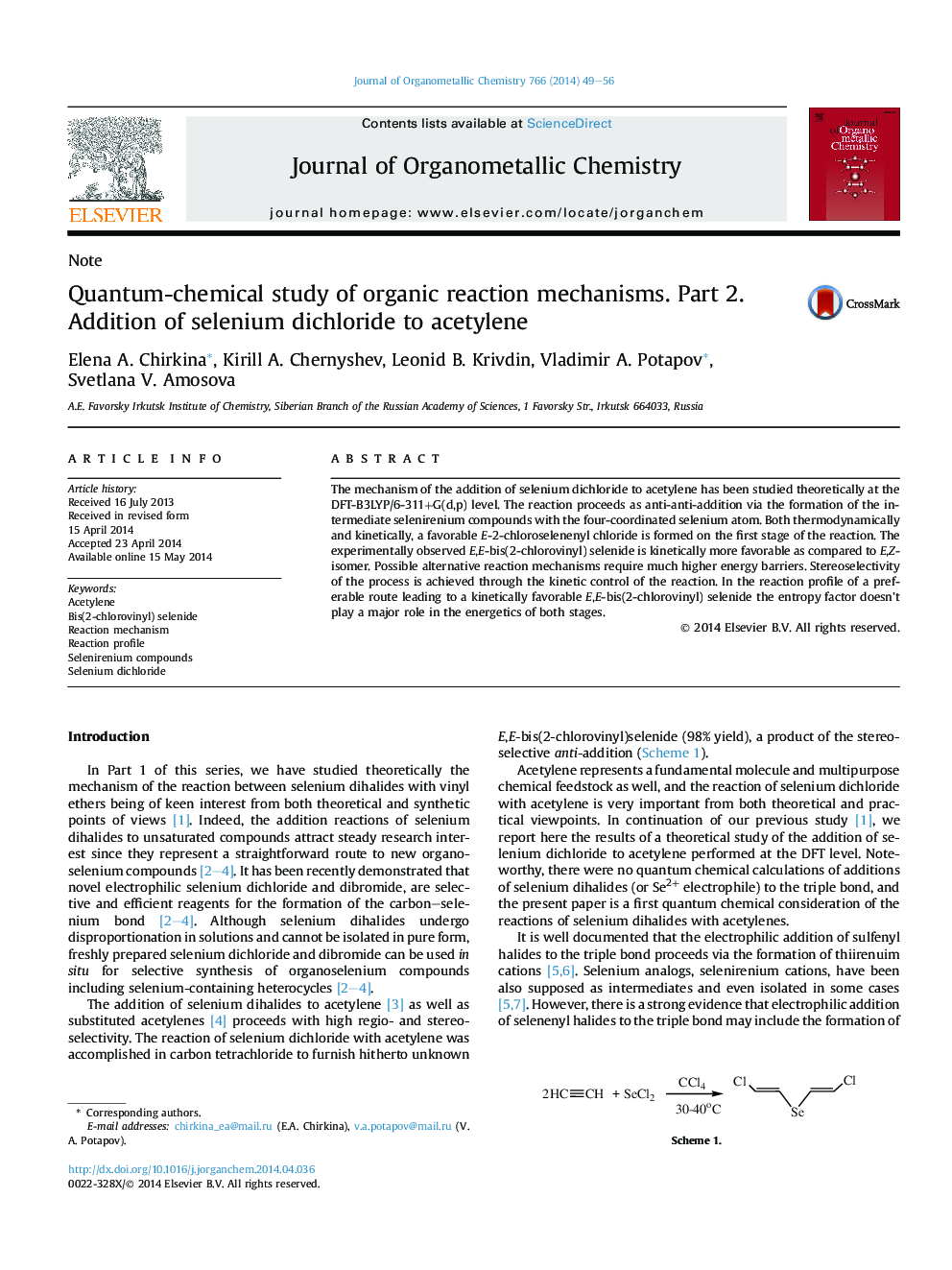| Article ID | Journal | Published Year | Pages | File Type |
|---|---|---|---|---|
| 1325471 | Journal of Organometallic Chemistry | 2014 | 8 Pages |
•The mechanism of the addition of selenium dichloride to acetylene has been theoretically studied.•The reaction proceeds via a selenirenium intermediate with the four-coordinated selenium atom.•The intermediate exhibits a trigonal-bipyramidal configuration.•The obtained results are in good agreement with the experimental data.
The mechanism of the addition of selenium dichloride to acetylene has been studied theoretically at the DFT-B3LYP/6-311+G(d,p) level. The reaction proceeds as anti-anti-addition via the formation of the intermediate selenirenium compounds with the four-coordinated selenium atom. Both thermodynamically and kinetically, a favorable E-2-chloroselenenyl chloride is formed on the first stage of the reaction. The experimentally observed E,E-bis(2-chlorovinyl) selenide is kinetically more favorable as compared to E,Z-isomer. Possible alternative reaction mechanisms require much higher energy barriers. Stereoselectivity of the process is achieved through the kinetic control of the reaction. In the reaction profile of a preferable route leading to a kinetically favorable E,E-bis(2-chlorovinyl) selenide the entropy factor doesn't play a major role in the energetics of both stages.
Graphical abstractThe reaction of selenium dichloride with acetylene proceeds as anti-anti-addition via the formation of intermediate selenirenium compounds with the four-coordinated selenium atom.Figure optionsDownload full-size imageDownload as PowerPoint slide
